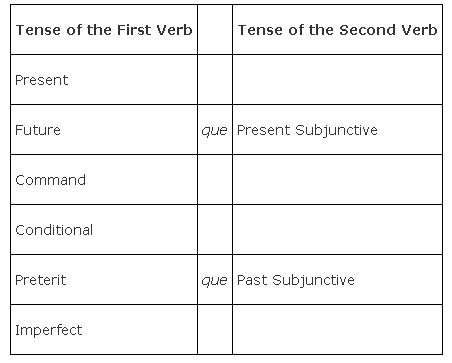Once you have mastered the construction of the past subjunctive, the next step is to understand when to use it. The same indicators that are used to represent each of the reasons for using the present subjunctive also predict the need for the past subjunctive.
When the sentence is in a past tense and there is a reason to use the subjunctive, you must use the past subjunctive. In other words, when there is a subjunctive indicator in front of the que, and the verb in front of the que is in a past tense, the verb that follows the que is conjugated in the past subjunctive.
The term “sequence of tenses” is used for the rules governing the use of the correct subjunctive tense. There are three tenses that are considered past tenses: the preterit, the imperfect, and the conditional. Once you can identify that the subjunctive is appropriate for the sentence, the sequence of tenses is utilized. There are only two simple subjunctive tenses, past and present. The tense of the verb before que determines whether you use the present subjunctive or the past subjunctive after que.
The sequence of tenses for subjunctive sentences declares that the past subjunctive must be used in the second clause if the verb in the first clause is in either the preterit, the imperfect, or the conditional. Remember that the present subjunctive is used in the second clause if the verb in the first clause is in the present or future tense or if it is a command.
The chart below is important to memorize in order to determine which of the two subjunctive tenses is appropriate; this chart, however, can be used only if you have already determined that the subjunctive mood is necessary because of the presence of a subjunctive indicator.

|
|
|
|
|
|
|
|
|
|
|
|
|
|
|
|
|
|
|
|
|
|
|
|
|
|
|
|
|
|
|
|
|
|
|
|
|
|
|